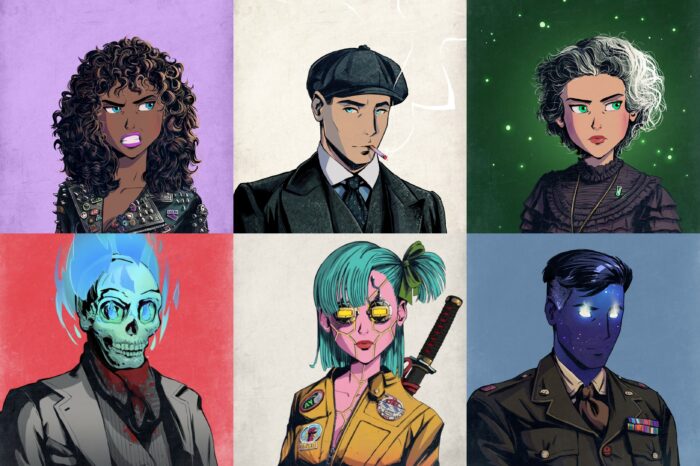TL;DR:
- Mad Lads is a collection of 10,000 Solana-based PFPs that utilize executable NFTs, or xNFTs, which are non-fungible tokens embedded with executable programming scripts.
- xNFTs can run code inside them, making them apps with functionality beyond that of regular tokens.
- The premier xNFT operating system is Backpack, created by Coral, which is an all-in-one wallet app that is a platform for xNFTs.
The world of non-fungible tokens (NFTs) has been turned on its head by the recent “Mad Lads” craze, a collection of 10,000 Solana-based PFPs that includes an enigmatic new advent on the blockchain: executable NFTs, or xNFTs.
While the collection may seem similar to the many generative avatar projects that came before it, there’s one major distinction: xNFTs come with the potential to completely rework the creators-collector ecosystem that Web3 has become accustomed to over the last few years.

MAD LADS XNFT
But what are xNFTs? Sometimes referred to as the next generation of NFTs, xNFTs are essentially non-fungible tokens embedded with executable programming scripts. Similar to how you might click a “.exe” file on your computer to start up a program or application, xNFTs are imbued with similar functionality that allows them to perform an indicated task or set of tasks. This essentially makes them apps.
This is the major differentiating factor between NFTs and executable NFTs. Because the latter can run code inside them, as opposed to a regular NFT that is essentially a static blockchain token represented visually by a media file, xNFTs have utility beyond that of a regular token, as they are broadly interactive.
While there aren’t currently many robust use cases for xNFTs, in the future, they could be utilized as direct portals to playing a game, listening to music, or even accessing a DeFi protocol. And users don’t have to connect their wallet to a third party to access this functionality; it’s literally built directly into an xNFT.
To access an xNFT’s functionality, though, users must use an xNFT wallet. Currently, Backpack is the premier xNFT operating system. Created by Solana framework development company Coral, Backpack is an all-in-one wallet app made to be the new open, programmable system for Web3.
While it’s a wallet, it is also a platform for xNFTs. In short, xNFTs can only achieve operability when used inside Backpack. This is in stark contrast to how the NFT ecosystem currently operates. Instead of a collector needing to connect their wallet to a website to validate and utilize their NFTs (which can sometimes be a security risk), xNFTs holders can directly access token-gated content through Backpack without having to depend on third-party software as an intermediary.
https://t.co/yHHOa7l5TR pic.twitter.com/KlsRgZZ8nN
— Mad Armani 🎒 (@armaniferrante) June 20, 2022
But the significance of xNFTs and Backpack goes far beyond Mad Lads tokenomics. This is because what Coral is building has the potential to create a shift in how both Web3 creators and consumers operate. By promoting open-source innovation, streamlining user experience, incentivizing community building, and more, Backpack could very well usher in a new phase of NFT growth, all starting on Solana.
xNFTs represent a significant innovation in the NFT space, and their potential for broad interaction and utility makes them more than just a new type of collectible. They are an advancement towards a new phase in NFTs, one that will offer creators and consumers a wealth of new opportunities. While there is still much to be explored and developed, the future of xNFTs looks bright. And, with the help of Backpack, Coral may have just created a new, open, and programmable ecosystem for the next generation of NFTs.
Although xNFTs are still a new and developing concept, they hold significant promise for the future of the NFT space. The potential applications of xNFTs are virtually limitless, from gaming to music and beyond. By giving NFTs the ability to run code, they become more than just a static token on the blockchain – they become interactive, multi-functional apps.
One of the key players in the xNFT space is Coral, the development company behind the Backpack wallet. Backpack is the premier xNFT operating system, providing a platform for xNFTs and enabling users to directly access token-gated content without the need for third-party software. This open, programmable system for Web3 could have far-reaching implications for how creators and consumers operate within the NFT ecosystem.
Backpack’s open-source framework and APIs allow anyone to build their own xNFT apps for any protocol on any blockchain, without permission. This could lead to a wave of innovation and collaboration in the NFT space, with developers of all backgrounds experimenting and building on the Backpack platform.
It remains to be seen what specific functionalities the Mad Lads xNFTs will have, but the potential is there for a range of exciting use cases. As the xNFT ecosystem continues to evolve and grow, it will be interesting to see how this technology transforms the NFT space and beyond.
In conclusion, the emergence of xNFTs represents a significant development in the NFT space, with the potential to transform the way we interact with digital assets. By enabling NFTs to run code and become interactive apps, xNFTs offer a new level of functionality and utility that could drive the growth of the NFT market. With Coral’s Backpack wallet leading the charge, the future looks bright for xNFTs and the broader Web3 ecosystem.

Thanks for reading Solanews , remember to follow our social media channels for more

